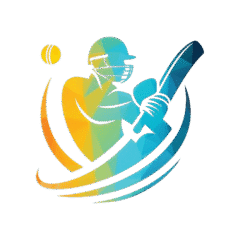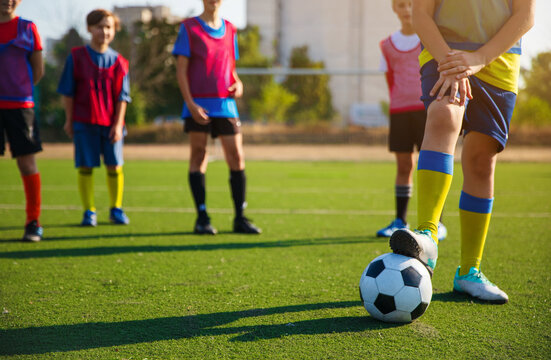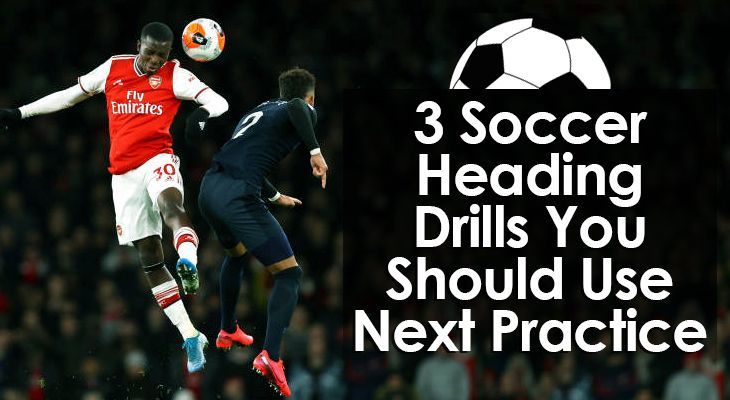U8 Soccer Drills: 7 Exciting and Fun Drills for 8-Year-Old Players (2024 Update)
At 8 years old, kids are starting to develop stronger coordination, better attention spans, and a real love for the game. They’re past the “just running around” stage and ready for drills that introduce real soccer skills—while still keeping fun at the heart of everything.
This is a great age to teach basic technique, encourage teamwork, and get kids used to thinking during play. The best part? They’re still wildly enthusiastic, eager to learn, and full of energy—so the more interactive and fast-paced your sessions are, the better.
This guide includes 7 fun and effective soccer drills for U8 players that focus on dribbling, passing, shooting, and simple decision-making—all tailored to this age group.
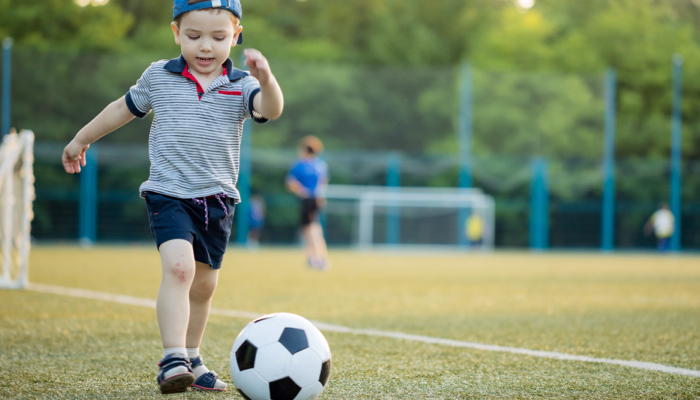
What Should U8 Soccer Drills Focus On?
By age 8, young players can handle more instruction and structure, but they still learn best through games and repetition.
Here’s what your drills should emphasize:
- Ball familiarity – Lots of touches and movement
- Dribbling in different directions
- Basic passing and receiving
- Simple shooting mechanics
- Awareness of teammates and space
- Listening, reacting, and having fun
At this stage, your main goal is to build a technical foundation while nurturing their love for the sport.
1. Red Light, Green Light (With a Ball)
Purpose: Teaches dribbling control and stopping quickly with the ball.
Setup:
- Create a 15- to 20-yard lane using cones.
- Each player starts with a ball on one end.
How to Play:
- When the coach says “Green Light,” players dribble forward.
- “Red Light” means they must stop their ball immediately and freeze.
- If anyone moves on red, they go back to the start.
- First to the finish line wins!
Add a Twist: Add “Yellow Light” (dribble slowly), or “Blue Light” (do toe taps or turns).
Why It Works:
It’s a simple and fun way to teach dribbling, control, and listening skills—with tons of energy and laughs.
2. Sharks and Minnows
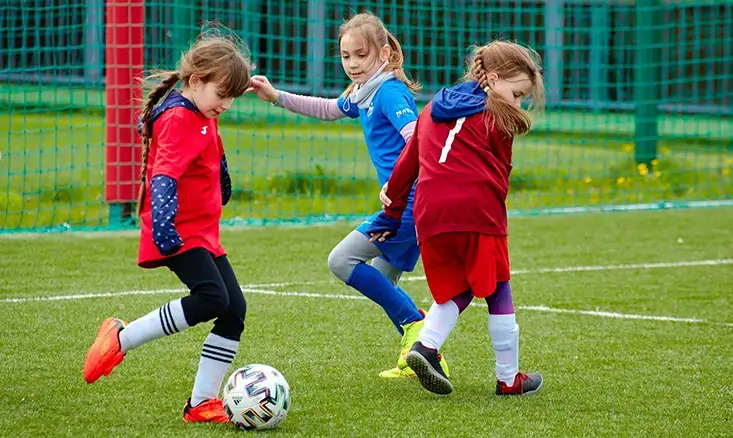
Purpose: Develops dribbling under pressure and spatial awareness.
Setup:
- Use a 20×20 yard grid.
- One or two players are “sharks” (no ball), others are “minnows” (with balls).
How to Play:
- Minnows dribble around the grid, trying to avoid sharks.
- Sharks try to steal or knock away balls.
- If a minnow loses their ball, they become a shark.
- Last minnow standing wins.
Pro Tip: Keep rounds short (1–2 minutes), then reset.
Why It Works:
This game-like drill builds fast footwork, ball protection, and fun competitiveness.
3. Cone Dribbling Maze
Purpose: Improves close ball control, quick changes in direction, and coordination.
Setup:
- Place cones randomly across a 20×20 grid—like a maze.
- Each player has a ball.
How to Play:
- Players dribble around the cones, avoiding contact.
- Encourage them to use both feet, turns, and different dribbling techniques.
- Challenge them to “find a new path” each round.
Progression:
Add defenders to slowly turn it into a traffic-heavy, reactive drill.
Why It Works:
Helps players get comfortable maneuvering the ball in tight spaces, which is key at this age.
4. Partner Passing Gates

Purpose: Teaches passing accuracy and movement between players.
Setup:
- Scatter small gates (2 cones about a yard apart) all over the field.
- Players work in pairs, each with one ball.
How to Play:
- Players pass the ball through a gate, then move to the next.
- See how many gates they can pass through in 1–2 minutes.
- Emphasize soft touches and proper passing form.
Variation:
Use left foot only, or limit to one-touch passing.
Why It Works:
This keeps things dynamic and game-relevant, and builds core passing skills while getting players moving together.
5. Freeze Tag With a Ball
Purpose: Blends tag-style movement with ball control and awareness.
Setup:
- Set up a 20×20 yard playing area.
- One or two players are “it,” and everyone has a ball.
How to Play:
- Players dribble freely.
- If a tagger taps someone, that player must freeze in place.
- To unfreeze, another player must dribble up and tap their ball against the frozen player’s ball.
Coaching Tips:
Encourage players to keep their heads up to avoid taggers—and practice control in tight spots.
Why It Works:
It’s fun, fast-paced, and teaches awareness, dribbling, and teamwork.
6. Small Goal Shooting Challenge
Purpose: Helps with shooting accuracy and ball-striking technique.
Setup:
- Place multiple small goals (or cone goals) across the field.
- Each player has a ball.
How to Play:
- Players start at a cone and take a shot at the nearest goal.
- After each shot, they retrieve their ball and shoot again from another cone.
- Count how many goals they score in a set time.
Progression:
Make the goals smaller or add a defender for more challenge.
Why It Works:
Teaches kids to aim, strike cleanly, and build confidence in front of goal.
7. 3v3 Mini Games
Purpose: Encourages teamwork, decision-making, and applying skills in a game setting.
Setup:
- Create small fields (20×30 yards).
- Divide into teams of 3 or 4 players.
How to Play:
- Let them play short matches (5–7 minutes).
- No goalkeepers needed—just keep things flowing.
- Encourage communication and quick passing.
Variation:
Use “no dribbling” or “two-touch only” rounds to work on specific skills.
Why It Works:
Mini games are the most realistic and engaging way to put their skills into practice.
Coaching Tips for U8 Sessions
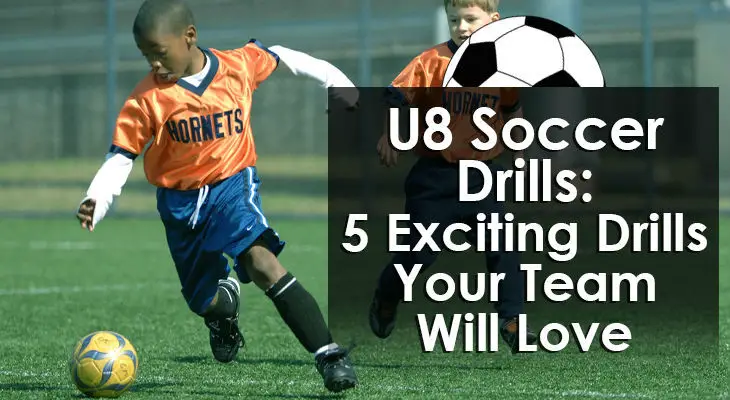
- Start with a warm-up: Use dynamic movement games, tag, or ball-juggling.
- Keep instructions short and simple: Show, don’t just tell.
- Encourage creativity: Let them try new things and express themselves.
- Don’t focus too much on winning: Emphasize improvement, effort, and teamwork.
- Rotate roles often: Give everyone a chance to pass, shoot, defend, and attack.
- Give lots of encouragement: High-fives and praise go a long way at this age.
Table of Contents
FAQs: Soccer Training for 8-Year-Olds
Q: How long should U8 soccer practices be?
A: Around 60 minutes is perfect. Anything longer, and you’ll lose their focus.
Q: How many times should they train each week?
A: 1–2 times per week is great at this age. Include one game if they’re part of a team.
Q: What ball size should they use?
A: Size 3 is ideal for U8 players. It’s light and easy to control.
Q: Should I teach positions now?
A: You can introduce the idea, but don’t get too tactical yet. Let kids explore different roles.
Q: How do I handle shy or hesitant players?
A: Keep things light and playful. Avoid calling them out—let them ease into the group at their own pace.
Q: What should I say when kids make mistakes?
A: Focus on what they did right. Mistakes are part of learning. Say things like, “Nice try!” or “Great idea—try it again!”
Final Thoughts
At age 8, kids are ready to learn and eager to play, making it the perfect time to build core soccer skills through engaging, playful drills. The key is to create an environment that feels more like a game than a lesson—but still packs in tons of development along the way.
The 7 U8 soccer drills in this guide are designed to boost dribbling, passing, awareness, and shooting in ways that keep kids smiling and active. With each session, you’ll see players grow more confident with the ball, more aware of their teammates, and more excited to play.
